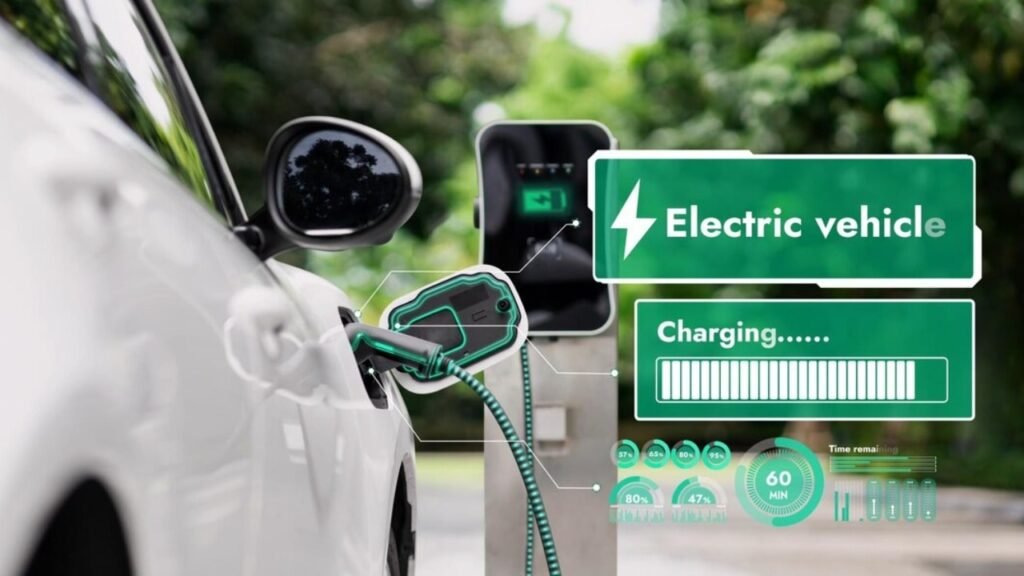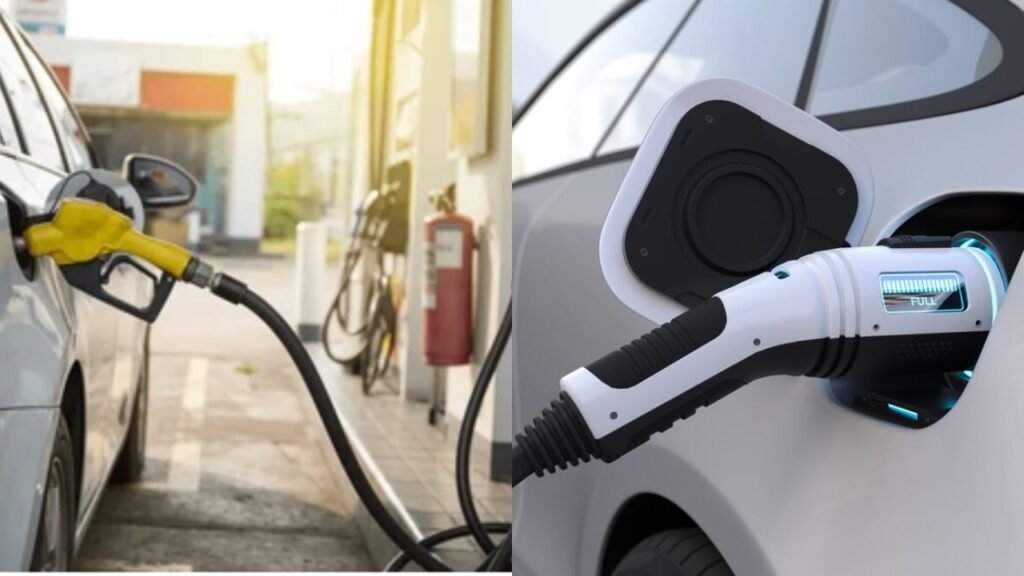
Electric vehicles (EVs) have been hailed as the future of transportation, promising cleaner air, reduced carbon emissions, and a break from the grip of fossil fuels. Yet, despite these advantages and significant governmental pushes towards EV adoption, a surprising trend has emerged: a substantial number of EV owners are considering a return to internal combustion engine (ICE) vehicles.
According to a recent study by McKinsey & Co., 46% of American EV owners are contemplating switching back to petrol or diesel cars. This phenomenon raises critical questions about the current state of EV technology and infrastructure, and why it might be failing to meet consumer expectations.
The McKinsey Study: Unveiling Discontent
The McKinsey study is a comprehensive survey that included over 30,000 consumers across 15 countries, representing more than 80% of the global sales volume. The findings were startling, revealing a deep dissatisfaction among EV owners. In the United States, nearly half of EV owners are considering returning to ICE vehicles. Globally, the number stands at 29%.
The primary reasons for this potential shift are multifaceted, but the most prominent issues include inadequate public charging infrastructure, high ownership costs, and limitations associated with long-distance travel. These factors collectively contribute to a growing disillusionment with EVs.
The Charging Infrastructure Problem
One of the most significant barriers to widespread EV adoption is the lack of adequate charging infrastructure. The McKinsey study found that only 9% of participants expressed satisfaction with the current public charging network. Dr. Philipp Kampshoff, leader of McKinsey’s Center for Future Mobility, emphasized that the slow rollout of charging stations has left many regions underserved.
For EV owners, the inconvenience of charging is a major deterrent. Unlike refueling at a petrol station, which takes a few minutes, charging an EV can take considerably longer, even with fast chargers. This inconvenience is compounded in regions where charging stations are sparse or unreliable. In rural areas, for instance, the scarcity of charging stations makes long-distance travel in an EV particularly challenging.
High Ownership Costs and Range Anxiety
Another critical issue driving EV owners back to ICE vehicles is the high cost of ownership. While the price of EVs has been gradually decreasing, they still tend to be more expensive upfront than their petrol or diesel counterparts. Additionally, the costs associated with battery replacement and maintenance can be prohibitive.
Range anxiety, or the fear that an EV will run out of charge before reaching its destination, is another significant concern. McKinsey’s data indicates that consumer expectations for EV range have increased, with the minimum range expectation rising from 270 miles in 2022 to 291.4 miles in 2024. Despite improvements in battery technology, many EVs still fall short of these expectations, especially when used for long-distance travel.
Market Uncertainty and Automaker Dilemmas
The uncertainty in the EV market further complicates the situation. Kevin Laczkowski, a senior partner at McKinsey, highlighted the unprecedented uncertainty facing the automotive industry. Automakers are now forced to invest in multiple technologies simultaneously, including EVs, hybrids, and even hydrogen fuel cells, to stay competitive.
This market volatility is reflected in the fluctuating sales of EVs. Companies like Tesla and Ford have seen their EV sales growth slow, prompting executives to rethink their long-term strategies. While the industry has made significant strides in improving EV range and battery charging times, the lack of robust infrastructure continues to be a major hurdle.
SUGGESTED: EV Car vs Petrol/Diesel Car: Which Vehicles Set to Outshine in 2024? What’s the Epic Choice for Future?
Global Perspectives and the Role of Government
The issues plaguing the EV market are not confined to the United States. The McKinsey study revealed that 33% of global respondents cited inadequate charging infrastructure as a critical issue, and 21% expressed no interest in switching to an all-electric vehicle. These statistics underscore the global nature of the challenges facing EV adoption.
Governments worldwide play a crucial role in addressing these challenges. In Australia, for example, the federal government is working to ramp up EV charging infrastructure, while the NSW government has dedicated $10 million to retrofit apartment buildings with EV charging stations. Such initiatives are essential for overcoming the “chicken and egg” problem, where the lack of charging infrastructure discourages EV adoption, and vice versa.

The Sustainability Debate
While EVs are promoted as a sustainable alternative to ICE vehicles, their overall environmental impact remains a subject of debate. The production and disposal of EV batteries pose significant environmental challenges, including the mining of rare earth metals and the management of battery waste.
Additionally, the source of electricity used to charge EVs can significantly impact their environmental credentials. In regions where electricity is primarily generated from fossil fuels, the carbon footprint of EVs may not be substantially lower than that of efficient ICE vehicles.
The Future of EVs: Navigating the Road Ahead
Despite the challenges, there are positive trends toward electrification. The McKinsey study indicates that 38% of non-EV owners worldwide would consider purchasing a plug-in hybrid (PHEV) or an EV for their next vehicle, marking a 1% increase from two years ago. This suggests a growing openness to electric mobility, provided the key issues can be addressed.
What Needs to Change?
- Infrastructure Development: A massive investment in public charging infrastructure is essential. Governments and private enterprises need to collaborate to ensure a widespread and reliable network of charging stations.
- Affordability: Reducing the upfront cost of EVs through subsidies, incentives, and advancements in battery technology will make them more accessible to a broader audience.
- Range Improvements: Continuous improvements in battery technology to extend the range of EVs will help alleviate range anxiety and make EVs more practical for long-distance travel.
- Consumer Education: Educating consumers about the benefits and practicalities of EV ownership, including the availability of home charging solutions and the real-world performance of EVs, is crucial.
- Environmental Impact: Addressing the environmental concerns associated with EV production and disposal is vital. This includes developing more sustainable battery technologies and improving the recyclability of EV components.
Conclusion
The journey towards widespread EV adoption is fraught with challenges, but it is not insurmountable. While a significant number of EV owners are considering a return to petrol or diesel cars, the underlying issues can be addressed through concerted efforts by governments, automakers, and consumers.
By improving charging infrastructure, reducing ownership costs, and addressing range anxiety, the automotive industry can make EVs a more viable and attractive option for all. The road ahead may be long, but with the right strategies and investments, the future of mobility can still be electric.
Read Next:

The Psychology of Love: Why Valentines Day Matters More Epic Than You Think
Discover the psychology of love and why Valentines Day is more important than you think. Learn how love impacts the brain, strengthens relationships, and boosts

Premier League Highlights: Arsenal Humiliate Man City 5-1, Spurs and Palace Secure Crucial Wins
Arsenal demolished Manchester City 5-1 in a statement premier league highlights win, reigniting their title hopes. Meanwhile, Crystal Palace stunned Man United 2-0, and Tottenham
